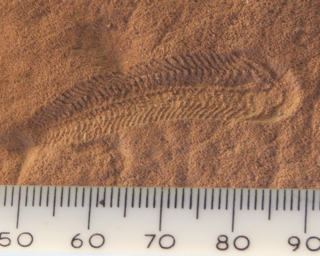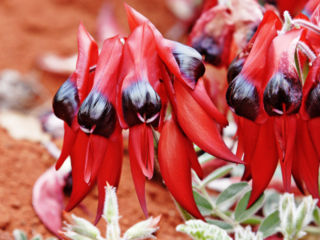 W
WThe Coat of arms of South Australia is the official symbol of the state of South Australia. It was granted by Queen Elizabeth II on 19 April 1984. They replaced a coat of arms granted to the State in 1936 by King Edward VIII.
 W
WThe current state flag of South Australia, was officially adopted by the government of South Australia in 1904.
 W
WOpal is a hydrated amorphous form of silica (SiO2·nH2O); its water content may range from 3 to 21% by weight, but is usually between 6 and 10%. Because of its amorphous character, it is classed as a mineraloid, unlike crystalline forms of silica, which are classed as minerals. It is deposited at a relatively low temperature and may occur in the fissures of almost any kind of rock, being most commonly found with limonite, sandstone, rhyolite, marl, and basalt.
 W
WThe piping shrike is the emblematic bird that appears on South Australia's flag, State Badge and Coat of Arms. The bird appears "displayed proper" with its wings outstretched and curved upwards. Although the image of the piping shrike is readily identified with South Australia, the bird in its own right has never been formally adopted as a faunal or bird emblem of the state. The term piping shrike for this species of Australian magpie is correct, yet uncommon. The term piping shrike is commonly mistaken to refer to the magpie-lark, which is incorrect.
 W
WThe leafy seadragon or Glauert's seadragon, is a marine fish in the family Syngnathidae, which includes seadragons, pipefish, and seahorses. It is the only member of the genus Phycodurus.
 W
WThe southern hairy-nosed wombat is one of three extant species of wombats. It is found in scattered areas of semiarid scrub and mallee from the eastern Nullarbor Plain to the New South Wales border area. It is the smallest of all three wombat species. The young often do not survive dry seasons. It is the state animal of South Australia.
 W
WSpriggina is a genus of early bilaterian animals whose relationship to living animals is unclear. Fossils of Spriggina are known from the late Ediacaran period in what is now South Australia. Spriggina floundersi is the official fossil emblem of South Australia. It has been found nowhere else. The organism reached about 3–5 centimetres (1.2–2.0 in) in length and may have been predatory. Its bottom was covered with two rows of tough interlocking plates, while one row covered its top; its front few segments fused to form a "head."
 W
WSwainsona formosa, Sturt's desert pea, is an Australian plant in the genus Swainsona, named after English botanist Isaac Swainson, famous for its distinctive blood-red leaf-like flowers, each with a bulbous black centre, or "boss". It is one of Australia's best known wildflowers. It is native to the arid regions of central and north-western Australia, and its range extends into all mainland Australian states with the exception of Victoria.
 W
WSwainsona formosa, Sturt's desert pea, is an Australian plant in the genus Swainsona, named after English botanist Isaac Swainson, famous for its distinctive blood-red leaf-like flowers, each with a bulbous black centre, or "boss". It is one of Australia's best known wildflowers. It is native to the arid regions of central and north-western Australia, and its range extends into all mainland Australian states with the exception of Victoria.